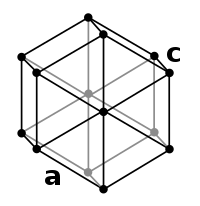
Photo from wikipedia
Abstract The selective enrichment of macerals and inorganic minerals during coal grinding may have an obvious effect on pyrolysis reactivity. In this paper, chemical structures and pyrolysis processes of Zhundong… Click to show full abstract
Abstract The selective enrichment of macerals and inorganic minerals during coal grinding may have an obvious effect on pyrolysis reactivity. In this paper, chemical structures and pyrolysis processes of Zhundong coal samples with different particle sizes were investigated by Fourier transform infrared spectroscopy (FT-IR) and thermogravimetric analysis (TGA), then semi-quantitatively characterised by a series of original infrared structural parameters and a comprehensive devolatilization index, respectively. The selective enrichment of different components in Zhundong coal was revealed on a molecular scale for the first time, and finally a correlation was established between the infrared structural parameters and pyrolysis reactivity. It is indicated that the decrease in particle size results in the following trends: the ash content gradually becomes lower, which can be effectively characterised by the infrared structural parameter, I a3 ; the total hydrogen content undergoes a Stable-Reduced-Stable process, while the ratio of aliphatic hydrogen to aromatic hydrogen undergoes a Reduced-Stable-Reduced process; the aliphatic side chains or bridge bonds gradually become longer, while the highly substituted aromatic rings tend to concentrate in the −106 + 80 μm particles, and the average abundance of hydrogen atoms in aromatic structures of these particles is up to the maximum; the oxygen-containing functional groups with C O structures concentrate in the smallest particles, while the ones with C O structures concentrate in the −106 + 80 μm particles; and the pyrolysis reactivity of particles gradually decreases. Finally, a correlation was established between the comprehensive infrared structural parameter S (as well as its modified form) and the pyrolysis reactivity, which was proved to be effective to predict the pyrolysis reactivity of Zhundong coal.
Journal Title: Fuel
Year Published: 2017
Link to full text (if available)
Share on Social Media: Sign Up to like & get
recommendations!